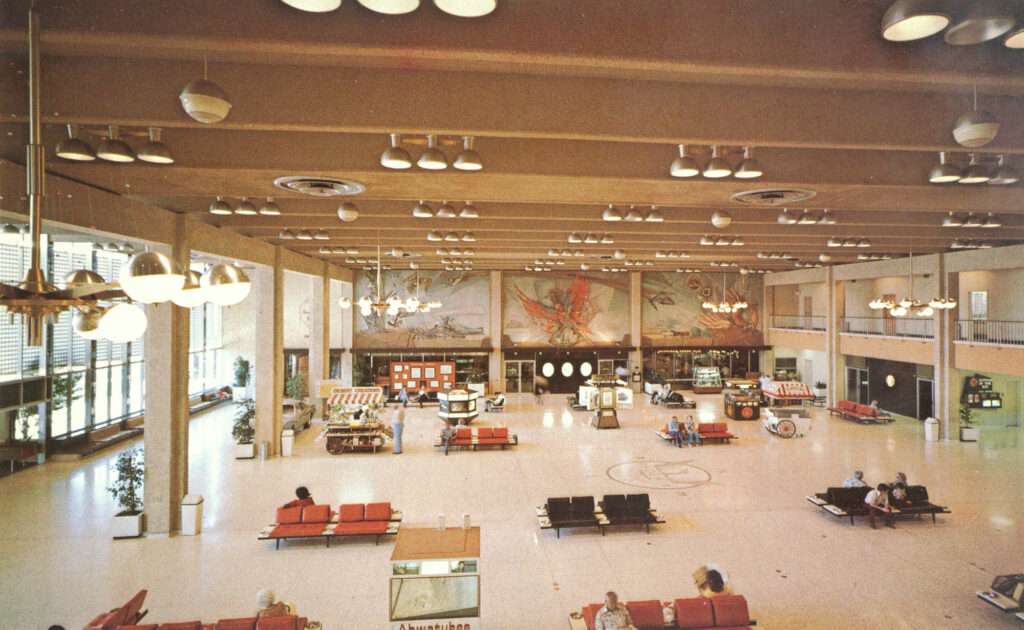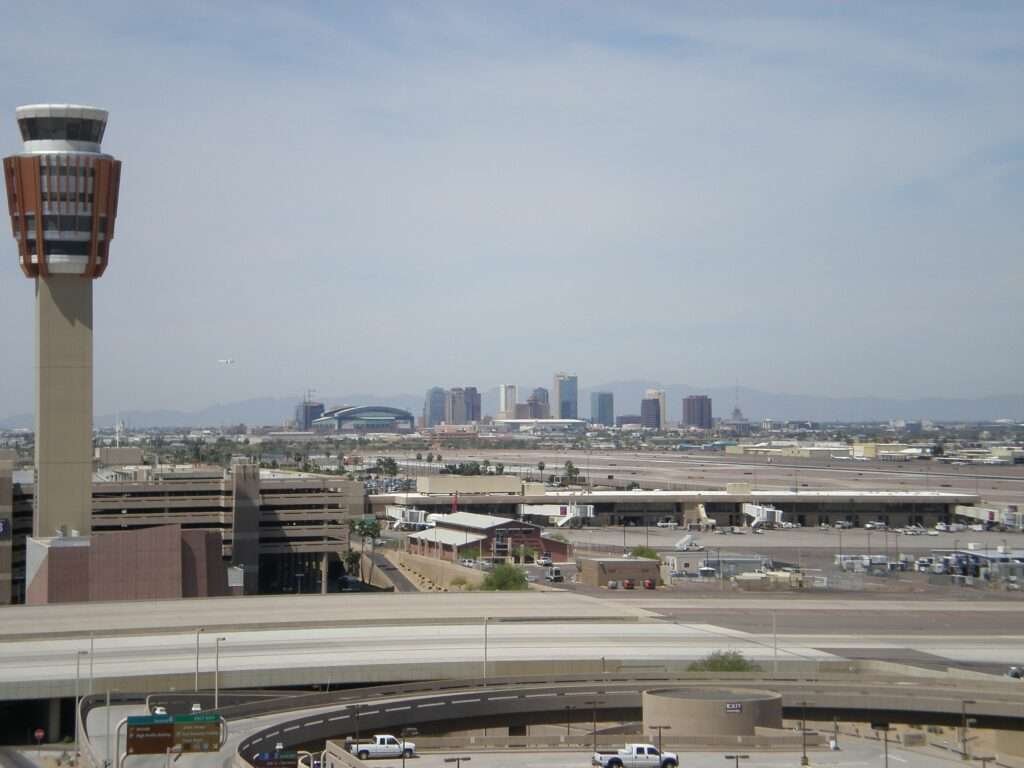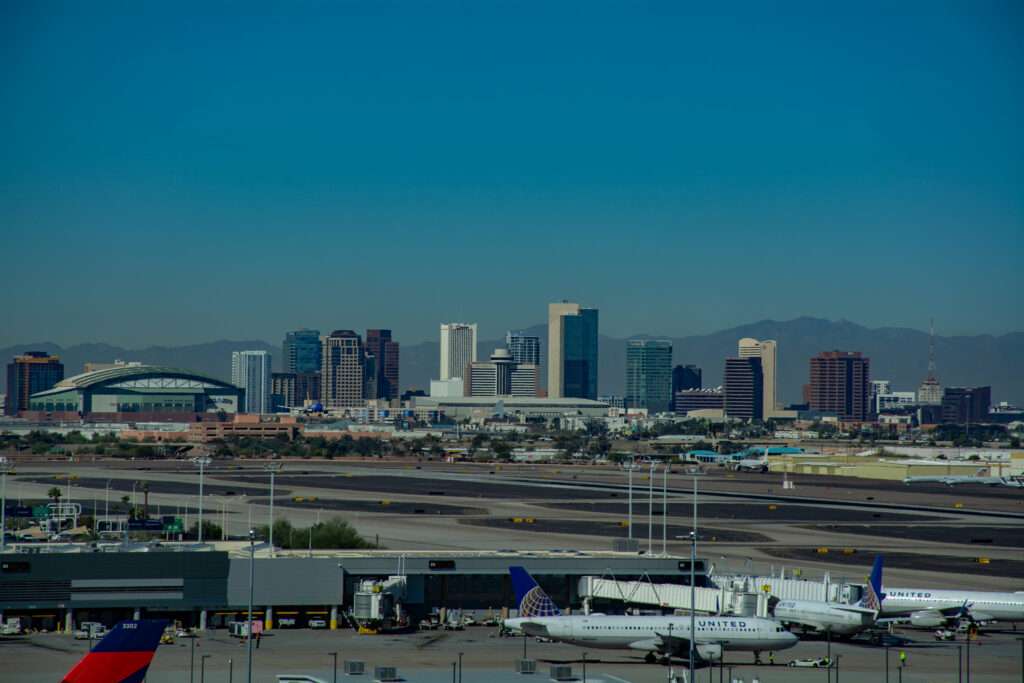Phoenix Sky Harbor International Airport (PHX), Arizona’s busiest airport, boasts a fascinating history that mirrors the state’s remarkable transformation.
Originally a single runway carved out of desert land, it has evolved into a major transportation hub, welcoming millions of visitors and playing a key role in Arizona’s booming economy.
Let’s delve into the captivating story of PHX, from its dusty origins to its current status as a vital gateway to the Grand Canyon State.
Taking Flight: A Vision Takes Root (1920s-1950s)
The story of PHX begins in the late 1920s. Claude Van Zandt, a local businessman with a vision for air travel’s potential, purchased land east of Phoenix and constructed a single runway in 1928.
He aptly named it “Sky Harbor,” a moniker that remains to this day.
Standard Air Lines, a predecessor of American Airlines, became the first commercial carrier to utilize the new facility in 1929, offering a route connecting Los Angeles and El Paso with a stop in Phoenix.
Furthermore, the early years were marked by modest growth.
Sky Harbor remained a relatively small operation, catering primarily to propeller-driven airplanes like the DC-3.
However, the seeds of future expansion were sown in 1935 when the City of Phoenix acquired the airport for $100,000, recognizing its strategic importance.
The turning point arrived in the 1950s.
With post-war economic growth and the rise of commercial aviation, the need for a more modern facility became evident.
In 1952, PHX unveiled its first “modern” terminal, a significant upgrade that marked the beginning of a new era for the airport.
Furthermore, airlines like United, Delta, and Bonanza began offering service, connecting Phoenix to a wider range of destinations.
Soaring High: Expansion and Modernization (1960s-1990s)

The 1960s witnessed a surge in passenger traffic at PHX.
To accommodate this growth, the airport constructed Terminal 2 in 1962, boasting a footprint of 330,000 square feet and featuring 19 gates.
This expansion solidified PHX’s position as a major aviation hub in the Southwest.
The following decades saw further development.
Thereafter, Terminal 3 opened in 1979, followed by Terminal 4, a massive complex featuring five concourses and 44 gates, in 1990.
Furthermore, these expansions not only increased passenger capacity but also introduced modern amenities like improved security checkpoints and a wider variety of shops and restaurants.
Throughout this period, PHX also witnessed the rise of international travel.
Airlines began offering direct flights to Mexico and Canada, and the airport implemented infrastructure changes to accommodate international arrivals and departures.
The 21st Century: A Gateway to the Southwest (2000-Present)

The 21st century has brought continued growth and innovation to PHX.
The airport has seen further expansion with the addition of new concourses, terminals, and parking facilities.
Moreover, in 2022, the eighth concourse at Terminal 4 opened, demonstrating PHX’s commitment to providing passengers with a seamless travel experience.
Technology has also played a significant role in Sky Harbor Airport’s evolution.
The airport has embraced self-service kiosks, automated baggage handling systems, and mobile apps to enhance passenger convenience and efficiency.
Beyond its role in passenger travel, PHX serves as a vital economic engine for Arizona.

It generates thousands of jobs and supports numerous businesses in the region.
The airport also plays a crucial role in tourism, providing a convenient gateway for visitors to explore the Grand Canyon, Sedona, and other popular Arizona destinations.
Today, Phoenix Sky Harbor International Airport stands as a testament to Arizona’s remarkable growth.
From its humble beginnings as a single runway in the desert to its current status as a bustling international hub, Phoenix Sky Harbor’s story reflects the transformative power of air travel and its impact on a region.
Finally, as travel patterns and technology continue to evolve, PHX remains poised to adapt and maintain its position as a vital gateway to the American Southwest.

Click the banner to subscribe to our weekly newsleter.









